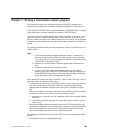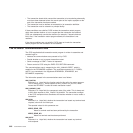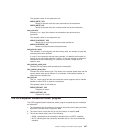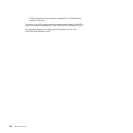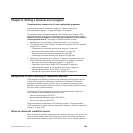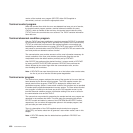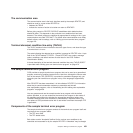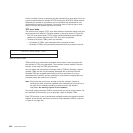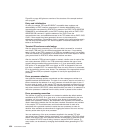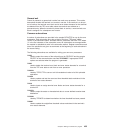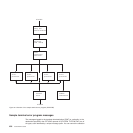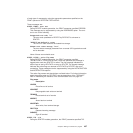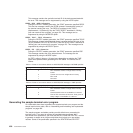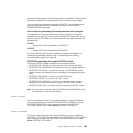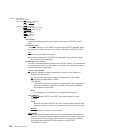
An ESE records the occurrence of a particular type of error associated with the
terminal. The contents of an error status element are described in the TEPCD
DSECT (generated by the DFHTEPM TYPE=INITIAL macro) under the comment
“ERROR STATUS ELEMENT FORMAT”. The number of ESEs per TEB remains
constant for all TEBs. You specify the number when the TEP tables are generated.
If fewer than the maximum number of error types recognized by DFHTACP (25) are
specified, one additional ESE, referred to as the “common error bucket”, is
generated for each TEB.
You can permanently reserve ESE space in each TEB for specific error types.
Those not permanently reserved are considered reusable, and are assigned
dynamically on the first occurrence of a particular error type associated with the
terminal. If an error type occurs that is not currently represented by an ESE, and if
all reusable ESEs are assigned to other error types, the occurrence of this error is
recorded in the common error bucket. DFHTACP can recognize far more error types
than can occur in a typical terminal network. By specifying less than the maximum
and allowing the sample DFHTEP to assign ESEs dynamically, you can minimize
the table size, and still control and account for the types of errors relevant to the
network.
TEP default table
The terminal error program (TEP) default table contains the “number and time”
thresholds for each type of error to be controlled and accounted for. An index array
at the beginning of the default table serves a dual function. If the value in the index
is positive, then the error code has a permanently defined ESE in each TEB and
the index value is the displacement to the reserved ESE. If the index value is
negative, then an ESE must be assigned dynamically from a reusable ESE if one
has not already been created by a prior occurrence. The complement of the
negative index value is the displacement to the thresholds for the error type
retained in the TEP default table.
Structure of the sample terminal error program
The structure of the sample terminal error program (DFHXTEP) can be broken
down into six major areas as follows:
1. Entry and initialization
2. Terminal identification and error code lookup
3. Error processor selection
4. Error processing execution
5. General exit
6. Common subroutines.
These areas are described in detail in the sections that follow.
SYMBOLIC TERMINAL ID
ERROR STATUS ELEMENT
.. .
.. .
.. .
COMMON ERROR BUCKET
Figure 21. Terminal error block (TEB)
Chapter 8. Writing a terminal error program 453



